
Float Nurse Practice EKG Rhythm Strips 201
A junctional rhythm is usually between 40 - 60 bpm, with a narrow QRS. Ventricular escape rhythms are usually less than 40 bpm and with wide QRS complexes. T his ECG will be a little challenging on this front, because the rhythm has some characteristics of junctional rhythm and of ventricular rhythm. Read more.

ECG Educator Blog Junctional Rhythms
0:00 / 2:19 Intro Junctional Escape Beat ECG - EMTprep.com EMTprep 164K subscribers 40K views 7 years ago Arrhythmia Identification Visit http://www.EMTprep.com today for more great content This.

ECG Rhythms SR, Second Degree AV Block Type I, Junctional Escape Beats
A central core of pacemaking cells ( P cells) that produce the sinus impulses. An outer layer of transitional cells ( T cells) that transmit the sinus impulses out into the right atrium. Sinus node dysfunction can result from either: Failure of the P cells to produce an impulse. This leads to sinus pauses and sinus arrest.
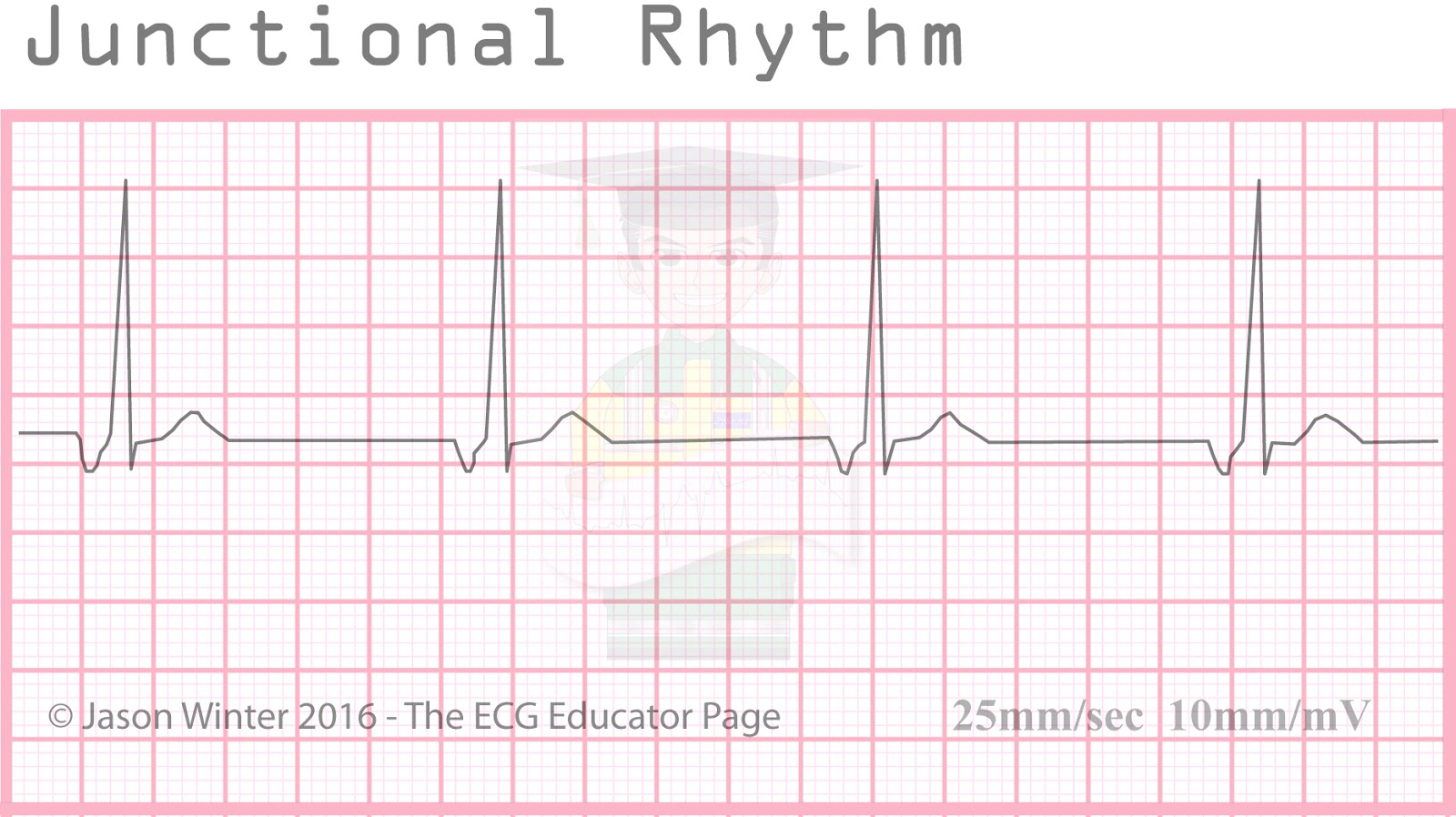
ECG Educator Blog Junctional Rhythms
A junctional escape beat is a delayed heartbeat originating not from the atrium but from an ectopic focus somewhere in the atrioventricular junction. [1] It occurs when the rate of depolarization of the sinoatrial node falls below the rate of the atrioventricular node. [2]

Junctional bradycardia EKG examples wikidoc
Junctional escape beats originate in the AV junction and are late in timing. They often occur during sinus arrest or after premature atrial complexes. The QRS complex will be measured at 0.10 sec or less. Rhythm will be regular with a rate of 40-60 bpm. Junctional Tachycardia This abnormal rhythm originates in the bundle of His.

Pin on Cardiac Queen
When the sinus rate falls below the discharge rate of the AV node, this becomes the dominant pacemaker, and the result is called a junctional escape beat. If the rate from both the SA and AV node fall below the discharge rate of ventricular pacemaker cells, a ventricular escape beat ensues. [citation needed]
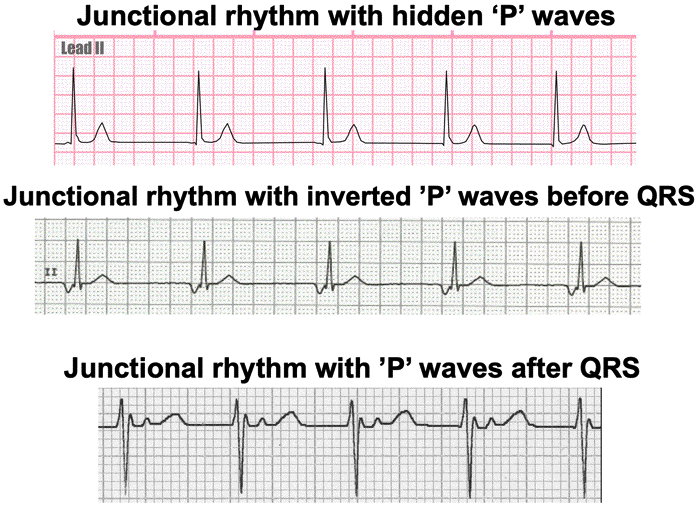
Junctional Rhythms
A junctional rhythm is a type of abnormal heartbeat, or arrhythmia. It is usually not serious, although it can be associated with heart inflammation or recent heart surgery. It happens when the atrioventricular (AV) node or "His bundle," both of which are electrical signals that help control your heartbeat, isn't working properly.
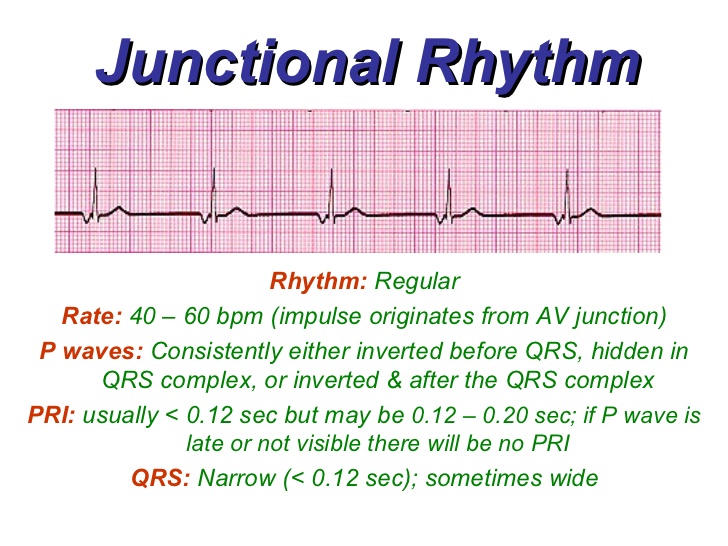
Junctional rhythms
Junctional rhythm is a type of irregular heart rhythm originating from the atrioventricular junction. Learn more about it, including its types, symptoms, causes, and more.. Junctional escape.

Junctional escape beats
Junctional escape beats and junctional escape rhythm are seen commonly in normal children, especially on ambulatory recordings during sleep, 1,2,81 but are less common on routine ECG in pediatric patients who are awake and at rest. It is usually seen in two clinical situations in pediatrics.
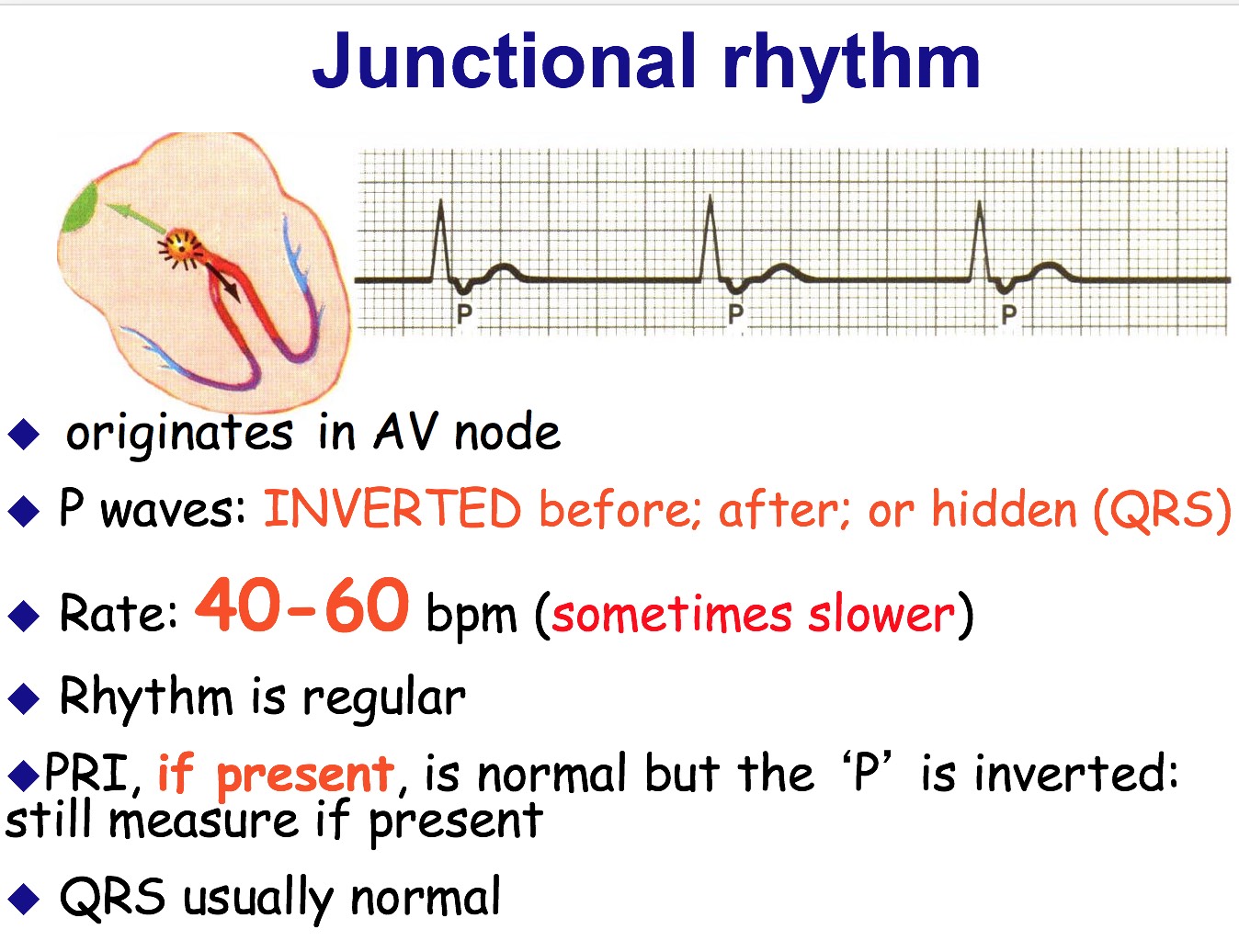
Junctional Rhythms
Junctional escape rhythm is a regular rhythm with a frequency of around 40-60 beats per minute. In case of sinus arrest (or any scenario in which atrial impulses do not reach the atrioventricular node), junctional escape rhythm may be life-saving.

Case B7. Third Degree AV Block with Junctional Escape Rhythm. St Emlyn
Junctional Rhythms are classified according to their rate: junctional escape rhythm has a rate of 40-60 bpm, accelerated junctional rhythm has a rate of 60-100 bpm, and junctional tachycardia has a rate greater than 100 bpm. [2] Table 1: ECG Characteristics [3] ECM Features Figure 2: ECM Analysis, Record 108 [4] [5] ECM Example

PPT Introducing the Junctional Rhythms PowerPoint Presentation, free
A junctional rhythm is an abnormal heart rhythm that originates from the AV node or His bundle. This activity reviews the evaluation and management of junctional rhythm and highlights the role of the interprofessional team in educating patients about their prognosis. Objectives: Outline the risk factors of developing a junctional rhythm.

JUNCTIONAL ESCAPE RHYTHM
Junctional escape rhythm is an abnormal rhythm that happens because your heartbeat is starting in an area that's taking over for the area that can't start a strong heartbeat. People without symptoms don't need treatment, but those with symptoms may need medicine or a procedure to fix the problem. With treatment, the outlook is good.

ECG Educator Blog Junctional Rhythms
This escape mechanism, with a rate of 40-60 beats per minute, produces a narrow QRS complex because the ventricle is depolarized using the normal conduction pathway. An accelerated junctional rhythm (rate >60) is a narrow complex rhythm that often supersedes a clinically bradycardic sinus node rate (see images below).
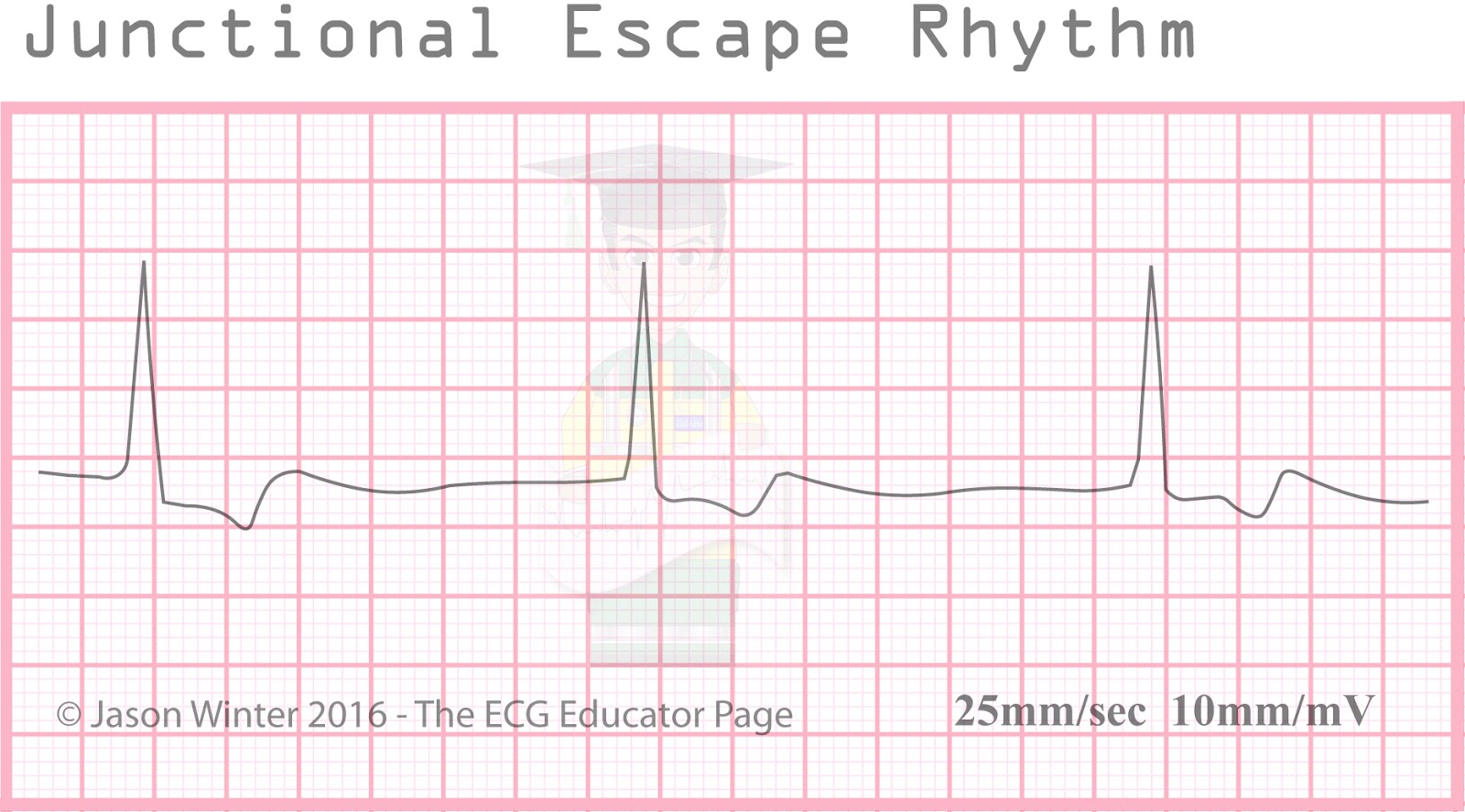
ECG Educator Blog Junctional Rhythms
Junctional and ventricular escape rhythms arise when the rate of supraventricular impulses arriving at the AV node or ventricle is less than the intrinsic rate of the ectopic pacemaker. Causes Conditions leading to the emergence of a junctional or ventricular escape rhythm include: Severe sinus bradycardia Sinus arrest Sino-atrial exit block

Float Nurse Practice EKG Rhythm Strips 163
Overview What is a junctional rhythm? A junctional rhythm is a type of arrhythmia (irregular heartbeat). If you have a junctional rhythm, your heart's natural pacemaker, known as your sinoatrial (SA) node, isn't working as it should. Your SA node sends electrical signals that control your heartbeat.